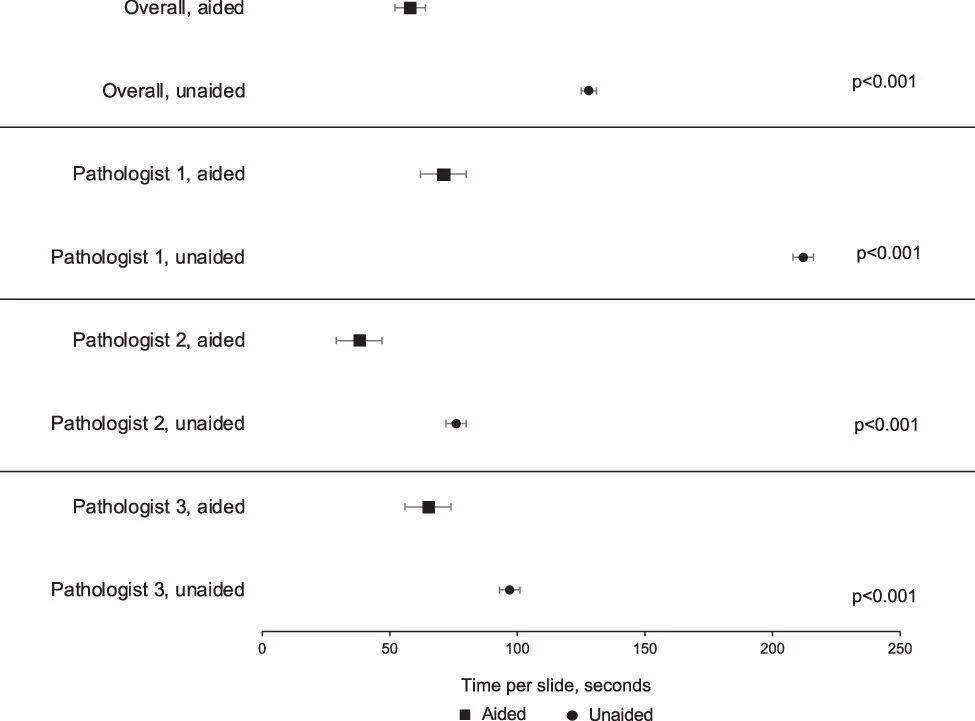Artificial Intelligence Helps Pathologists Increase Diagnostic Accuracy and Efficiency in the Detection of Breast Cancer Lymph Node Metastases
55% AVERAGE REDUCTION IN READING TIMES
The study highlights that AI can help pathologists shorten their reading times by more than half while also improving their rate of detection
ARTIFICIAL INTELLIGENCE HELPS PATHOLOGISTS INCREASE DIAGNOSTIC ACCURACY AND EFFICIENCY IN THE DETECTION OF BREAST CANCER LYMPH NODE METASTASES
Published in The American Journal of Surgical Pathology
Retamero, Juan Antonio MD, MSc; Gulturk, Emre MSc; Bozkurt, Alican MSc; Liu, Sandy MD; Gorgan, Maria MD; Moral, Luis MD; Horton, Margaret PhD; Parke, Andrea PhD; Malfroid, Kasper MSc; Sue, Jill MS; Rothrock, Brandon PhD; Oakley, Gerard MD; DeMuth, George MS; Millar, Ewan BSc, FRCPath; Fuchs, Thomas J. DSc; Klimstra, David S. MD
The American Journal of Surgical Pathology 48(7):p 846-854, July 2024. | DOI: 10.1097/PAS.0000000000002248
ABOUT THIS STUDY
Paige designed this study to show how pathologists’ performance in detecting lymph node metastases of breast cancer varied when aided by AI.
THE RESULTS
A group of 3 pathologists reviewed 167 breast sentinel lymph node whole-slide images from 148 patients, first without support from the AI, and then after a washout period, assisted by AI. Read modality and reading order were randomized for each pathologist. Changes in their reading times, sensitivity and specificity were assessed.
Using Paige Breast Lymph Node, two of the three pathologists achieved significant improvements in sensitivity, increasing from 74.5% to 93.5%.
55% overall efficiency gains
69.1% average reduction in reading times required for suspicious slides
19% sensitivity improvements in 2 of 3 pathologists
94.9% negative predicative value (NPV) | standalone performance
Paige Breast Lymph Node produces a significant reduction in slide review times for both benign and malignant cases and can help pathologists detect challenging metastases.


